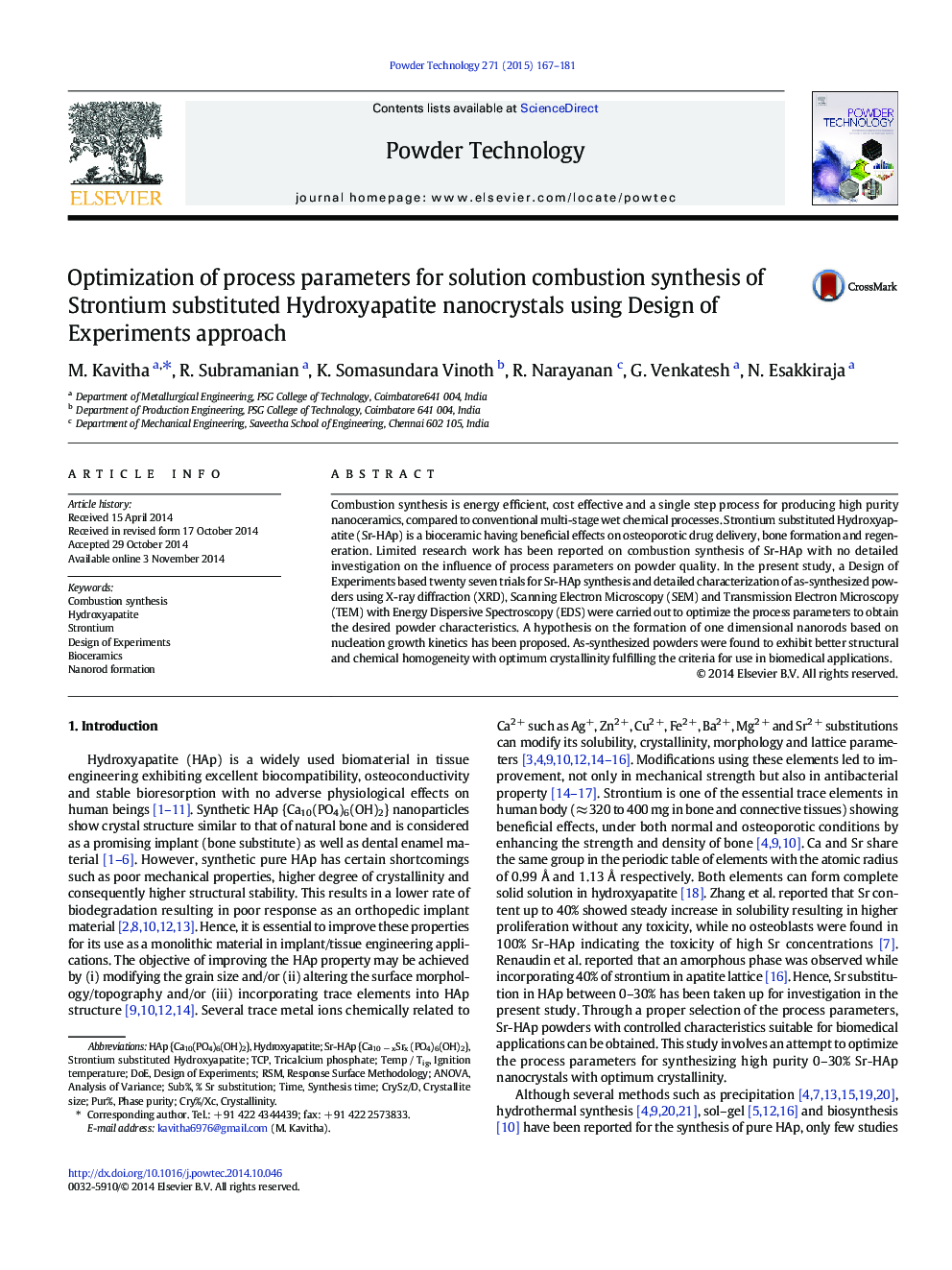| Article ID | Journal | Published Year | Pages | File Type |
|---|---|---|---|---|
| 235800 | Powder Technology | 2015 | 15 Pages |
•Sr-HAp nanorods were synthesized following simple and easy procedure.•Systematic investigation of process parameters to produce Sr-HAp in single step•Design of Experiments models developed to predict the powder characteristics.•Process optimization was done for bulk production of Sr-HAp powders.•Hypothesis on Sr-HAp nanorod formation was proposed.
Combustion synthesis is energy efficient, cost effective and a single step process for producing high purity nanoceramics, compared to conventional multi-stage wet chemical processes. Strontium substituted Hydroxyapatite (Sr-HAp) is a bioceramic having beneficial effects on osteoporotic drug delivery, bone formation and regeneration. Limited research work has been reported on combustion synthesis of Sr-HAp with no detailed investigation on the influence of process parameters on powder quality. In the present study, a Design of Experiments based twenty seven trials for Sr-HAp synthesis and detailed characterization of as-synthesized powders using X-ray diffraction (XRD), Scanning Electron Microscopy (SEM) and Transmission Electron Microscopy (TEM) with Energy Dispersive Spectroscopy (EDS) were carried out to optimize the process parameters to obtain the desired powder characteristics. A hypothesis on the formation of one dimensional nanorods based on nucleation growth kinetics has been proposed. As-synthesized powders were found to exhibit better structural and chemical homogeneity with optimum crystallinity fulfilling the criteria for use in biomedical applications.
Graphical abstractFigure optionsDownload full-size imageDownload as PowerPoint slide
